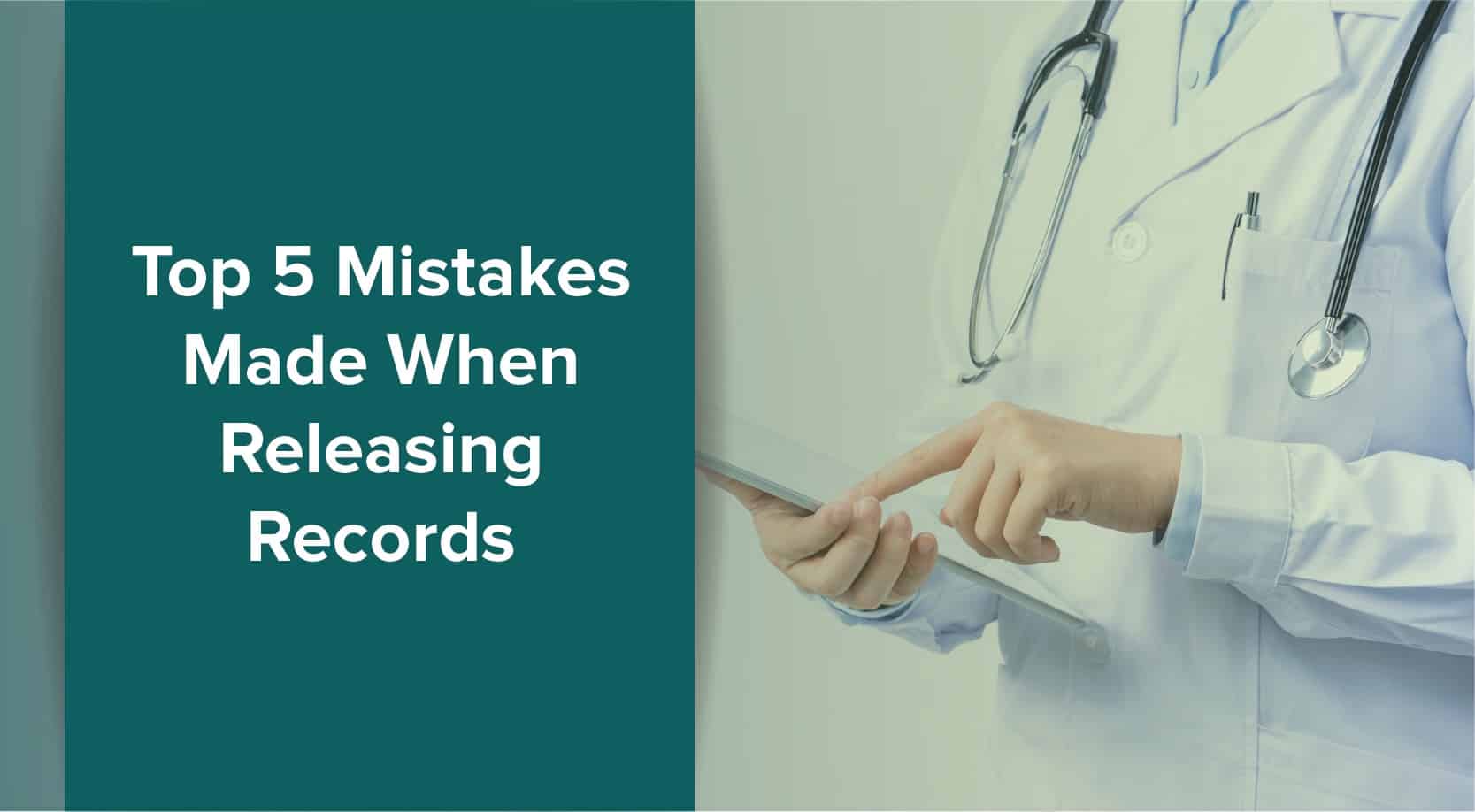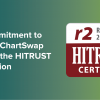Health care providers often have the best of intentions when it comes to maintaining privacy, ensuring accuracy, and complying with HIPAA regulations. Technical safeguards can sometimes be tricky and can quickly compromise a patient’s confidentiality — leading to HIPAA violations.

Here are the top 5 mistakes to avoid when releasing records:
1. Employees Inappropriately Access and/or Disclose Patient Information
In just a quick lapse of judgement, employees can find themselves in a HIPAA violation. This can happen when employees access patient files out of spite and/or curiosity, misplace or mishandle a patient file, access patient information from an unsecured device, or talk about patient information with another individual without prior authorization. While these lapses are likely simple mistakes, it’s important to put safeguards in place to avoid these issues.
2. The Health Care Provider Fails to Have Computer Security Systems in Place
If health care providers do not implement security measures, hackers or other individuals could access patient information. In 2021, more than 45.7 million patient records were impacted by a major healthcare data breach. It’s essential to use secure passwords and to restrict access. For counter staff, healthcare providers should have computers positioned so that the public cannot access or view the patient information.
3. Employees Divulge Medical Information
When employees are not properly trained on policies and procedures, it’s possible that they could disclose medical information in a way that has not been authorized by the patient. This includes an employee sharing a patient’s medical information to an unauthorized person, texting test results or other patient data, and/or posting PHI to a social media account.
4. Employees Improperly Store, Retain, and/or Dispose of Old Records.
Paper medical records have been around for years — some are so old that they’ve yellowed with age. The problem with these records is that they take up a lot of room, and they can be a records management nightmare. Files must be kept in a secure and accessible location.
5. Healthcare Providers Fail to Train Employees on Record Retrieval and Record Release
Without proper training, employees don’t know that they are violating record retrieval/record release process, and they may deploy malicious software without realizing it.
How ChartSwap Helps Mitigate Mistakes
ChartSwap is a cloud-based, secure record exchange platform that is specifically designed to streamline information exchange related to health information management and electronic health records (EHRs). Beyond the ease of use, ChartSwap has rigorous standards and controls in place to protect practices from accidental, as well as the malicious, release of records. It makes sense to rely on a single platform where you can access, track, and download paper medical records or EHRs quickly, accurately, and securely.
Learn How You Can Benefit From Using ChartSwap







